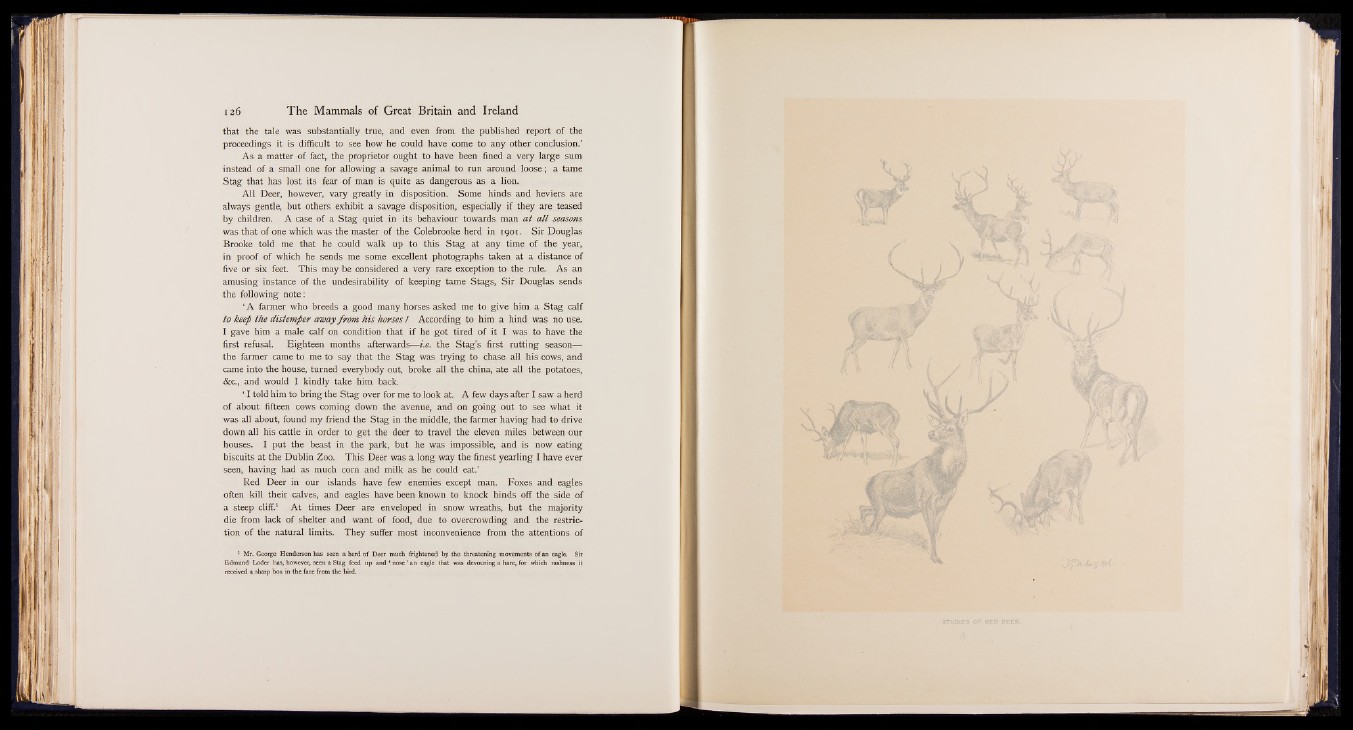
that the tale was substantially true, and even from the published report of the
proceedings it is difficult to see how he could have come to any other conclusion.’
As a matter of fact, the proprietor ought to have been fined a very large sum
instead of a small one for allowing a savage animal to run around loose; a tame
Stag that has lost its fear of man is quite as dangerous as a lion.
All Deer, however, vary greatly in disposition. Some hinds and heviers are
always gentle, but others exhibit a savage disposition, especially if they are teased
by children. A case of a Stag quiet in its behaviour towards man at a ll seasons
was that of one which was the master of the Colebrooke herd in 1901. Sir Douglas
Brooke told me that he could walk up to this Stag at any time of the year,
in proof of which he sends me some excellent photographs taken at a distance of
five or six feet. This may be considered a very rare exception to the rule. As an
amusing instance of the undesirability of keeping tame Stags, Sir Douglas sends
the following note:
‘ A farmer who breeds a good many horses asked me to give him a Stag calf
to keep the distemper away from h is horses l According to him a hind was no use.
I gave him a male calf on condition that if he got tired of it I was to have the
first refusal. Eighteen months afterwards— i.e. the Stag’s first rutting season—
the farmer came to me to say that the Stag was trying to chase all his cows, and
came into the house, turned everybody out, broke all the china, ate all the potatoes,
&c., and would I kindly take him back.
‘ I told him to bring the Stag over for me to look at. A few days after I saw a herd
of about fifteen cows coming down the avenue, and on going out to see what it
was all about, found my friend the Stag in the middle, the farmer having had to drive
down all his cattle in order to get the deer to travel the eleven miles between our
houses. I put the beast in the park, but he was impossible, and is now eating
biscuits at the Dublin Zoo. This Deer was a long way the finest yearling I have ever
seen, having had as much corn and milk as he could eat.’
Red Deer in our islands have few enemies except man. Foxes and eagles
often kill their calves, and eagles have been known to knock hinds off the side of
a steep cliff.1 At times Deer are enveloped in snow wreaths, but the majority
die from lack of shelter and want of food, due to overcrowding and the restriction
of the natural limits. They suffer most inconvenience from the attentions of
1 Mr. George Henderson has seen a herd of Deer much frightened by the threatening movements of an eagle. Sir
Edmund Loder has, however, seen a Stag feed up and ‘ nose ’ an eagle that was devouring a hare, for which rashness it
received a sharp box in the face from the bird.